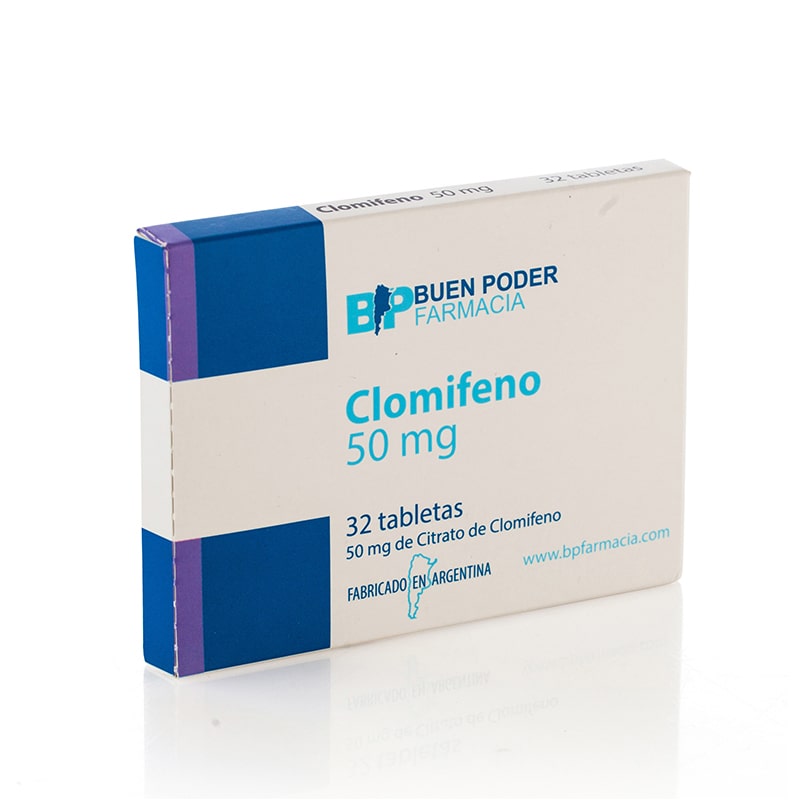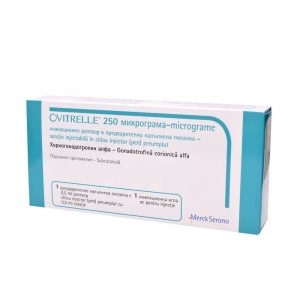Description
Clomid (clomiphene citrate/clomiphene citrate) is an anti-estrogen drug that is given to women for the treatment of infertility or the inability to ovulate. In clinical medicine, this drug is explicitly referred to as a nonsteroidal ovulation stimulant. It is indicated to stimulate egg maturation in certain diseases of the pituitary or ovaries and after constant use of contraceptives (contraceptives). It is also used to eliminate increased sick lactation (galactorrhea), which persists after pregnancy. Indication in men: decrease in the production of spermatozoa. The drug works by interacting with estrogen receptors, often antagonistically, in various body tissues, including the hypothalamus, pituitary gland, ovaries, endometrium, vagina, and cervix.
The main objective of the drug is to counteract the negative feedback of estrogen on the hypothalamus, pituitary and ovaries, by enhancing the release of gonadotropins (LH and FSH). This increase in gonadotropins can lead to egg release (follicular rupture) and ideally lead to conception. Clomiphene citrate is a synthetic estrogen with concurrent agonist/antagonist properties and in this respect is very similar in structure and action to Nolvadex.The estrogenic and anti-estrogenic properties of clomiphene citrate are thought to play a role in its ability to maintain female fertility.
In men, Clomid (clomiphene citrate/clomiphene citrate) also acts as a partial anti-estrogen and can be used to combat some of the side effects induced by non-aromatizable steroids. Some of these side effects are gynecomastia and increased water retention. As an anti-estrogen drug, clomiphene citrate can also cause an increase in follicle-stimulating and luteinizing hormone levels, which can increase testosterone production. This effect is particularly beneficial at the end of a steroid cycle when endogenous levels of natural testosterone are suppressed. At this stage, clomiphene citrate is most often taken in combination with hCG (Pregnyl) and tamoxifen for faster recovery of endogenous testosterone production (see post-steroid therapy article).
If testosterone does not return to normal levels within a short time, significant loss of muscle mass and strength may occur. This is because without testosterone (or other anabolic/androgenic steroids), the catabolic hormone cortisol becomes the dominant force affecting muscle protein synthesis. Often in post-steroid decline, if the state of imbalance in the endocrine system is not corrected, the muscle mass gained can be lost very quickly and in the long term.
It should also be noted that triphenylethylene compounds (toremifene citrate, tamoxifen citrate, clomiphene citrate) tend to be significantly estrogenic in the liver. This means that although they block estrogenic activity in certain parts of the body, they can actually act as estrogen in certain important organs.Estrogenic action in the liver is important in regulating serum cholesterol levels (increased HDL synthesis and decreased LDL levels). Since bodybuilders face negative cardiovascular side effects due to the use of anabolic steroids, the use of aromatase inhibitors to solve the problem is not always the best solution. Taking medication for gynecomastia, which at the same time improves cholesterol levels, is a better solution.
History of Clomid (clomiphene citrate)
Clomid is a fertility drug with a significant history and use in the United States. The drug was widely used in the early 70s and is still widely used in general medicine. Clomiphene citrate is currently available in the pharmaceutical market almost worldwide. The two most popular names for the drug are Clomid and Serofene, although it can be found under many other trade names including Sepafar, Omifin, Pergotime, Gonaphene, Duinum, Clastil, Ova-Mit and Clastilbegyt. Clomiphene citrate is generally a very inexpensive drug compared to other more potent anti-estrogens such as the newer third generation selective aromatase inhibitors. It also remains very popular with bodybuilders and athletes.
How Clomid (Clomiphene Citrate) is distributed
Clomid (clomiphene citrate/clomiphene citrate) is most commonly produced and distributed as 50mg tablets.
Structure and Characteristics of Clomid (Clomiphene Citrate / Clomiphene Citrate)
Clomid (clomiphene citrate) is classified as a selective estrogen receptor modulator with agonist and antagonist properties. It has the chemical name of 2-[4-(2-chloro-1,2-diphenylvinyl)phenoxy]triethylamine dihydrogen citrate.
Warnings for Visual Symptoms
Some patients taking clomiphene citrate report blurring or other vision problems such as spotting and glare. These symptoms occur more often at higher doses or with prolonged use and often disappear after a few days to a week. However, complicated visual disturbances have been reported after discontinuation of Clomiphene treatment and may rarely be irreversible. Users of the drug should be aware that the manifestation of such symptoms may increase the risk of using machinery and driving. Although the exact cause of these symptoms has not been established, it is recommended that you stop taking Clomiphene if you experience any and see an eye doctor for an appointment.
Side effects
Clomiphene citrate has good tolerance and a low incidence of significant side effects. The most common side effects include: ovarian enlargement (13.6%), vasomotor waves (10.4%), abdominal discomfort (5.5%), nausea/vomiting (2.2%), chest discomfort (2) ., 1%), visual symptoms (1.5%), headache (1.3%) and unnatural uterine bleeding (1.3%). Data also show that long-term use of clomiphene citrate may increase the risk of ovarian tumours. Clomiphene citrate is sometimes associated with a serious and life-threatening side effect called ovarian hyperstimulation syndrome (OHSS). Warning signs of OHSS include: abdominal pain and bloating, nausea, diarrhea, and weight gain.
App (basic)
Clomid is FDA approved for the treatment of women with ovulation dysfunction due to contraception. The recommended dose is 50 mg per day for 5 days, starting on the first day of the menstrual cycle.If ovulation fails in the next cycle, a dose of 100mg per day for 5 days can be taken. Many doctors recommend limiting consumption to no more than 6 times.
When used by men (not intended) to lessen estrogenic side effects caused by the use of anabolic androgenic steroids, the dose is usually 50-100 mg per day (1-2 tablets). Keep in mind, however, that tamoxifen generally has an advantage over clomiphene citrate for this purpose. More commonly, clomiphene citrate is taken at a dose of 50-100mg per day for 30 days after the end of a steroid cycle, with the aim of restoring natural testosterone production to normal levels.
It is considered most suitable in a multi-component recovery program after a steroid cycle. Female athletes sometimes use clomiphene citrate to reduce estrogen before a bodybuilding competition. In some cases, it can help with fat loss, especially in problematic female areas such as the hips and thighs. However, the drug often produces many concerning side effects in premenopausal women and is not sought after by this age group.







Reviews
There are no reviews yet.